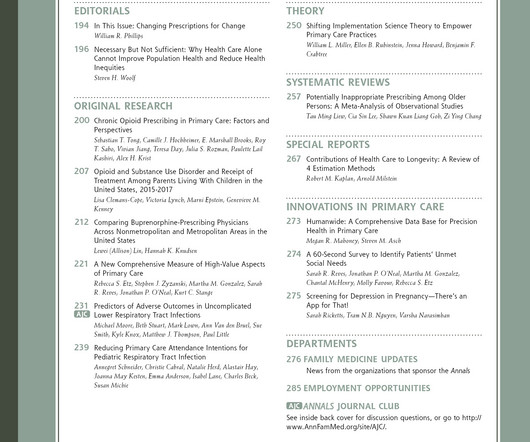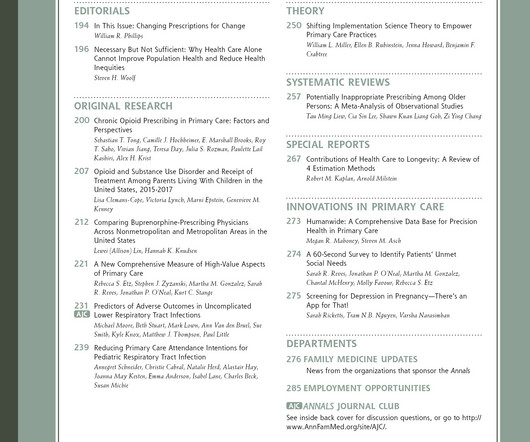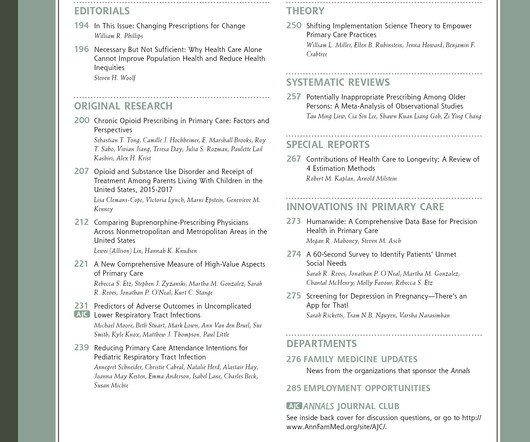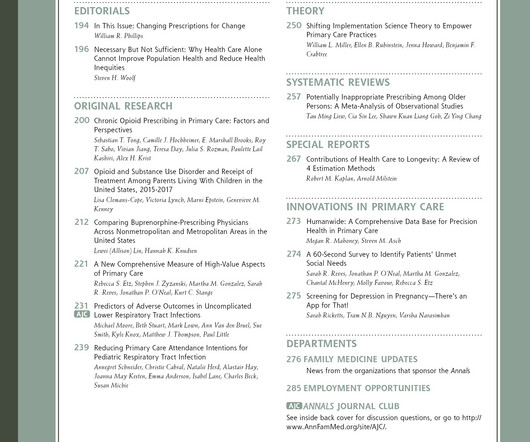Associations between tapering or discontinuing opioids and subsequent pain-related primary care visits [Pain management]
Annals of Family Medicine
NOVEMBER 20, 2024
Context: Tapering and discontinuation of chronic opioids has increased, with subsequent reports of exacerbated pain and increased emergency department (ED) visits associated with tapering. Relative to non-tapered patients, patients who tapered-and-continued was had similar rates of pain-related primary care visits (aIRR 1.01, 95% CI: 0.97-1.06)











Let's personalize your content